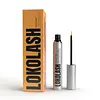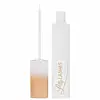What's inside
What's inside
 Key Ingredients
Key Ingredients

 Benefits
Benefits

 Concerns
Concerns

No concerns
 Ingredients Side-by-side
Ingredients Side-by-side

Water
Skin ConditioningSodium Hyaluronate
HumectantBiotinoyl Tripeptide-1
Myristoyl Pentapeptide-17
Skin ConditioningPentylene Glycol
Skin ConditioningPanax Ginseng Root Extract
EmollientSwertia Japonica Extract
Skin ConditioningPantothenic Acid
Skin ConditioningBiotin
AntiseborrhoeicFicus Pumila Seed Extract
HumectantAcorus Calamus Root Extract
PerfumingSerenoa Serrulata Fruit Extract
Skin ConditioningOligopeptide-10
AntimicrobialTocopherol
AntioxidantWater
Skin ConditioningGlycerin
HumectantButylene Glycol
HumectantPanthenol
Skin ConditioningSodium Citrate
BufferingLeuconostoc/Radish Root Ferment Filtrate
Antimicrobial1,2-Hexanediol
Skin ConditioningAcetyl Tetrapeptide-3
Skin ProtectingAlanine
MaskingArbutin
AntioxidantArginine
MaskingAspartic Acid
MaskingBenzoic Acid
MaskingBiotin
AntiseborrhoeicCalcium Gluconate
HumectantCaprylyl Glycol
EmollientChamomilla Recutita Flower Extract
MaskingDextran
Ethylhexylglycerin
Skin ConditioningGluconolactone
Skin ConditioningGlycine
BufferingHexylene Glycol
EmulsifyingHistidine
HumectantHydrolyzed Glycosaminoglycans
HumectantHydroxyethylcellulose
Emulsion StabilisingIsoleucine
Skin ConditioningMagnesium Ascorbyl Phosphate
AntioxidantMyristoyl Pentapeptide-17
Skin ConditioningPanax Ginseng Root Extract
EmollientPCA
HumectantValine
MaskingPhenylalanine
MaskingPolydextrose
HumectantPolysorbate 20
EmulsifyingProline
Skin ConditioningPropylene Glycol
HumectantSerine
MaskingVitis Vinifera Seed Extract
AntimicrobialSodium Hyaluronate
HumectantTrifolium Pratense Flower Extract
AstringentYeast Extract
Skin ConditioningSodium PCA
HumectantThreonine
Tocopheryl Acetate
AntioxidantTriethanolamine
BufferingSodium Lactate
BufferingPhenoxyethanol
PreservativeSodium Benzoate
MaskingSodium Metabisulfite
AntioxidantWater, Glycerin, Butylene Glycol, Panthenol, Sodium Citrate, Leuconostoc/Radish Root Ferment Filtrate, 1,2-Hexanediol, Acetyl Tetrapeptide-3, Alanine, Arbutin, Arginine, Aspartic Acid, Benzoic Acid, Biotin, Calcium Gluconate, Caprylyl Glycol, Chamomilla Recutita Flower Extract, Dextran, Ethylhexylglycerin, Gluconolactone, Glycine, Hexylene Glycol, Histidine, Hydrolyzed Glycosaminoglycans, Hydroxyethylcellulose, Isoleucine, Magnesium Ascorbyl Phosphate, Myristoyl Pentapeptide-17, Panax Ginseng Root Extract, PCA, Valine, Phenylalanine, Polydextrose, Polysorbate 20, Proline, Propylene Glycol, Serine, Vitis Vinifera Seed Extract, Sodium Hyaluronate, Trifolium Pratense Flower Extract, Yeast Extract, Sodium PCA, Threonine, Tocopheryl Acetate, Triethanolamine, Sodium Lactate, Phenoxyethanol, Sodium Benzoate, Sodium Metabisulfite
Ingredients Explained
These ingredients are found in both products.
Ingredients higher up in an ingredient list are typically present in a larger amount.
Biotin is a B vitamin that is naturally produced by our bodies. It is also called Vitamin H.
Our bodies use biotin in the metabolism process. It also helps our bodies use enzymes and move nutrients around. A biotin deficiency can lead to brittle hair and nails.
More research is needed on applying biotin topically. However, taking biotin orally has been shown to help nourish the skin, hair, and nails. They play a role in forming skin-hydrating fatty acids.
Biotin is water-soluble. It can be found in foods such as fish, eggs, dairy, nuts, and meat. Vitamin H stands for "haar" and "haut". These are the German words for hair and skin.
Learn more about BiotinMyristoyl Pentapeptide-17 isn't fungal acne safe and is a peptide.
Ginseng root is a well-loved ingredient in Asian skincare for good reason. It hydrates the skin, soothes irritation, and helps even out skin tone.
In traditional East Asian medicine, ginseng has been used for centuries both as food and as a healing remedy, and modern research continues to confirm its skin benefits.
One of the standout features of ginseng is its ability to improve blood circulation and oxygen delivery to the skin, bringing a fresh supply of nutrients to support overall skin health. It also has antioxidant and anti-inflammatory properties. This helps to protect your skin against damage from UV exposure, pollution, and daily stress.
Additionally, studies suggest that ginseng may help reduce hyperpigmentation by inhibiting tyrosinase, the enzyme involved in melanin production.
There are different types of ginseng used in skincare, and while they all share core benefits, their potency can vary.
Most products use fresh or white ginseng because it’s more affordable. However, red ginseng, produced by steaming the root, contains higher levels of ginsenosides, which are compounds with proven anti-aging effects. These ginsenosides help reduce the appearance of wrinkles and improve skin elasticity.
Note: All forms of ginseng are listed simply as “Panax ginseng” in ingredient lists. We recommend reaching out to the brand if you have questions about which type of ginseng is used in their ingredients.
For general antioxidant benefits, any ginseng extract will do, but for wrinkle care or firmer skin, red or fermented ginseng is often more effective.
In short, ginseng is a powerhouse ingredient that supports hydration, radiance, and resilience.
Learn more about Panax Ginseng Root ExtractSodium Hyaluronate is hyaluronic acid's salt form. It is commonly derived from the sodium salt of hyaluronic acid.
Like hyaluronic acid, it is great at holding water and acts as a humectant. This makes it a great skin hydrating ingredient.
Sodium Hyaluronate is naturally occurring in our bodies and is mostly found in eye fluid and joints.
These are some other common types of Hyaluronic Acid:
Learn more about Sodium HyaluronateWater. It's the most common cosmetic ingredient of all. You'll usually see it at the top of ingredient lists, meaning that it makes up the largest part of the product.
So why is it so popular? Water most often acts as a solvent - this means that it helps dissolve other ingredients into the formulation.
You'll also recognize water as that liquid we all need to stay alive. If you see this, drink a glass of water. Stay hydrated!
Learn more about Water